MDF as trim: is backpainting required?
Hi experts! I’m admittedly not here often, but I love being able to inquire with the experts!
I worked on an extensive renovation of a high end residence over a year ago that features paneling on the walls of the main stair in an existing three story house. The stair and railings are all new, and to dress up the walls on around the stair, we panelized the walls by adding MDF trim on top of the drywall.
Even as the owners were moving in, some of the joints and seams in the trim carpentry began to separate. We know it’s an old existing house, so there is some settling to be expected (it is masonry bearing walls with a full basement & wood joists). We also expect some of the caulk joints to crack as the seasons change w/forced air heating and humid summers in Chicago.
However, we also know that the carpenters doing the work were not exactly the highest bidder. They seemed a good bargain for the price at the time, but now the joints are separating considerably in several areas in the house (not just the stair hall).
Is it likely that this problem could have been aleviated if we had specified that the MDF was to be pre-primed on all sides? It was primarily ripped from 4×8 sheets, but I had always thought that MDF was dimensionally stable, as it is a composite of sawdust & glue…
Attached is a photo of the stair hall showing the installation before it was primed and painted.
Thanks for your opinions and expertice!
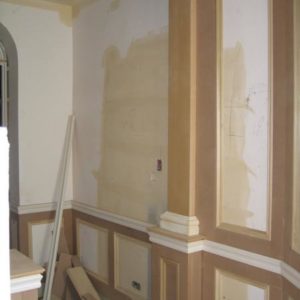
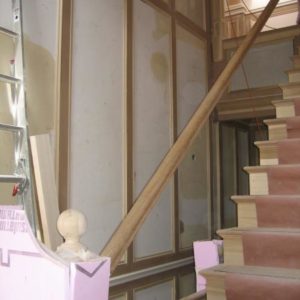
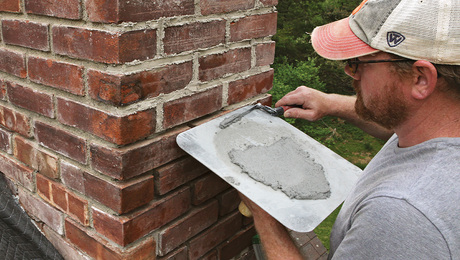
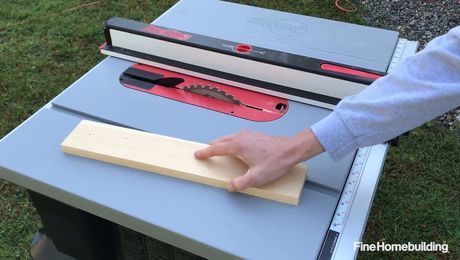
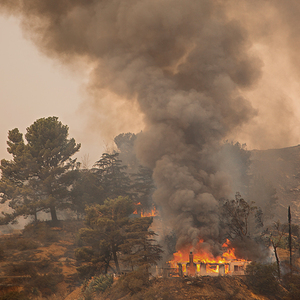


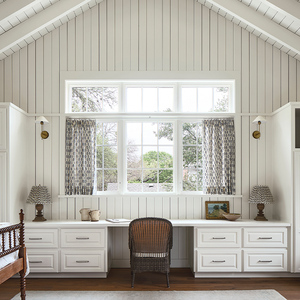













Replies
I've installed thousands of feet of MDF trim, without backpriming anything, and have yet to had a callback about joints opening. Maybe I just haven't heard about it, but I don't think so.
I do glue all my joints, cut them a litle long, and spring them into place. That seems to really work. Plus you have to give MDF a pretty heavy coat of glue, since it really sucks it up. If I have time, I like to wipe a little glue on both sides of the joint, let that set a bit , and then apply glue again, and assemble the joint. Frequently, I'll bisquit the joint.
MDF is a lot more stable than wood, but it will still move. But IMO backpriming it doesn't make a lot of difference.
I just got back from this house and walked through it with the owner and contractor. it's difficult to pinpoint the problem... but hopefully someone out there has good suggestions for a remedy!The trim is separating throughout the house. it is undoubtedly partly due to the dry forced air heat in the house. the oak flooring is separating as well, but with a dark stain doesn't show nearly as much.all the trim is painted. the crown molding is poplar, the panel molding is a pre-primed trim (and looks good now) but the stiles & rails around the flat panels (which are just exposed drywall) is MDF ripped from sheets, and the seams are showing through the paint, in many cases worse then others. many of the butt joints in long flat ares of the mdf trim have separated, and angle cut seams in the poplar crown molding have split as well. the worst problem is the crown molding separating along the top and bottom throughout the house.the contractor's solution is to get color matched caulk and re-caulk all the joints in the house. he claims that now that the house has been completed for over a year, most of the settling and shrinking should be done. for the bad butt joints, the will sand them, fill them with bondo, and re-paint over them with a foam roller (in an attempt to blend it in to the sprayed on paint finish).I fear that the caulk on all of the joints will separate again next year... is it better or worse to install the caulk now (in january/february) while everything is dried out?attached are some photos of the cracking in the paint.Thanks again!
Short of tearing everthing out and starting over, your contractor's solution to the gaps seems fine.
I agree with him; most of the settling/shrinking should be done by now.
I'm curious- were propane heaters used in the house during construction? If they were, they pump out a LOT of moisture. Enough to make things swell up a bit. When the regular forced air heat comes on, things will definitely shrink.
I did a job a few years ago where I let my trim acclimate to the house before I started, used bisquits and plenty of glue, and still had joints open up when the heat finally kicked on. That's when I found out about propane heaters, and the humidity they can produce.
propane heat was used early on, but not by the time the trim and flooring was going in... but, thanks for the tip on them!do you think back painting or pre-priming the poplar crown could have helped?both the flooring and running trim did not get a chance to acclimate. they were on the job for a week or two, but the A/C was not on yet in the middle of the summer, and the doors and windows were frequently open. i think this is a big part of the problem...
In my experience I have never seen MDF move as much as it looks like from the pics, and I am in a similiar climate(West Michigan) . I would think that either the trim stock itself, or the entire structure was extremely damp. I agree ,caulk is the best option,it should be stable from here on out.
(I have never backprimed MDF)
Edited 1/24/2008 4:27 pm ET by LIVEONSAWDUST
It also seems that they forgot to glue the joints in many places.
The crown is poplar?
Yeah, priming it probably would have helped. At least a little. But really tight joints and glue would have helped more.
Sounds like the house is in need of a humidifier.
All the caulk in the world will only act as a bandaid if there is a problem with the heating/cooling system.
That's where I would start.....identify the cause before attempting repairs.
J. D. ReynoldsHome Improvements
I've never backprimed MDF when used as interior trim and have never had a problem with that approach.
Could you elaborate on the photo below? That crack in the skirt board (the one about an inch to the left of the butt between the skirt and the baseboard) doesn't look normal at all. It almost looks like some sort of structural failure, which would be almost inexplicable.
View Image
The biggest question I have is who did the painting and the methods used. Was some sort of putty used along the long joints between two adjacent boards? Were the long joints caulked?
For example, look at the long gap between the top of the skirt and the 1x3ish rail above it. Was any caulk put along that line during the painting process?
upon revisiting the site and further review, the crack in the skirt below is unique. The crack above it where you asked if caulk was used is representative of the real problem throughout the house. yes caulk was used!The skirt board was actually installed by the stair builder, and because it was so tightly installed, I think the crack in the skirt board does show a crack due to structural settling.Yes, this trim was installed in the high heat and humidity of the Chicago summer, and at the time the A/C was not yet up and running. After all of this discussion and review, I believe this is the single largest factor to the problem throughout the house. These current photos are also taken in January, the most dry time of year.thanks for all your input!
Thanks for the further information. That crack in the photo is strange; it's hard to me to imagine how the MDF could have failed that way. Even with settling, etc., I would not have expected to see such an abrupt failure only an inch or so away from the end of the board. (Maybe a nail pattern there raised the local stresses.)
Regarding the gaps between pieces of trim, my thoughts are the same as others in attributing it to the wide humditiy change from installation conditions to present conditions.
I suppose it's possible that a premium quality caulk might have held up better, but it's only speculative. I think that what the contractors are proposing (ie more caulk where needed) is a reasonable approach.
Edited 1/28/2008 1:15 pm ET by Ragnar17
I would not want to use bondo in butt joints. PL caulk is more difficult to tool, but will expand/contract with movement of the MDF, but rigid Bondo will surely crack again.
BruceT
When was the trim applied? Is there a humidifier in the house running in the winter? All the miosture pumped in during construction takes quite a while to dry out.
In my opinion, back priming may slow the seasonl changes, but over the length of a heating or summer season, the wood will move the same amount.
I read an article recently that stated (based on testing) that three coats of paint were required to have a noticable effect on sealing wood from moisture. That would be all 6 sides of every piece, except those surfaces sealed with glue.
Door manufacturers require that the top and bottom of doors be sealed for the warranty to be valid. In my opinion this is a way to avoid warranty claims. I asked a door rep. once when he came out to look at a problem door (first thing he did was take out a mirror and check the door top and bottom) if the dados that the large center panel rested in were sealed when the door was manufactured... answer, no. I have never seen one yet that was, but no sealing top and bottom voids the warranty. go figure.
What's up with the crack at the skirt board baseboard joint? It looks like it cracked away from the joint.
It looks like some of those cracks have been sealed with a clear caulk. Sure hope it isn't silicone.
Lastly, we have a clause in our contract about seasonal wood movement. Paint is not covered in the warranty for this reason. We can't control the humidity or the weather.
I doubt this has anything to do with backpriming the mdf, and as others have offered it is extremely unlikely that it would have made any difference with the issue you face. Was it a particularly humid time during the house construction (ie humid summer weather) and most stuff was in a swollen state? You mentioned the floor has done the same thing. The crack that "looks" like it runs through the skirt board is kind of surprising though, if it really runs right through that board.
The fix suggested sounds pretty reasonable. You may get a few more cracks in the future, but hopefully over time things settle to a final state. I will assume the house includes systems to help mitigate wide swings of humidity throughout the seasons.